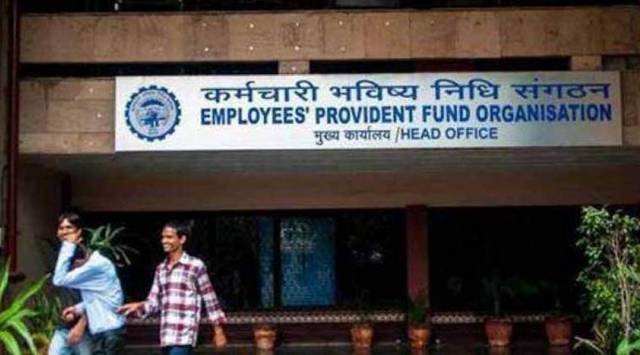Higher pension: EPFO extends deadline to May 3
The employee’s entire contribution goes to EPF, while the 12% contribution by the employer is split as 3.67% to EPF and 8.33% to EPS. The Government of India contributes 1.16% for an employee’s pension. Employees do not contribute to the pension scheme.
 At present, both employees and employers contribute 12% of the employee’s basic salary, dearness allowance and retaining allowance, if any, to the EPF. (Express Photo)
At present, both employees and employers contribute 12% of the employee’s basic salary, dearness allowance and retaining allowance, if any, to the EPF. (Express Photo)The Employees’ Provident Fund Organisation (EPFO) has extended the deadline to opt for higher pension to May 3.
In a message displayed on its website, the EPFO said the joint option for employees who were in service prior to September 1, 2014 and continued to be in service on or after 01.09.2014 but could not exercise joint option under the Employees’ Pension Scheme can do so now on or before May 3, 2023. The link, however, is not functional completely as of now.
The Supreme Court in a ruling on November 4 had upheld the amendments to the Employees’ Pension (Amendment) Scheme, 2014, implying another chance for employees who were existing EPS members as on September 1, 2014 to contribute up to 8.33 per cent of their ‘actual’ salaries — as against 8.33 per cent of the pensionable salary capped at Rs 15,000 a month — towards pension.
The apex court had allowed a four-month window to enable opting for higher pension for EPS subscribers. On February 20, 12 days before the end of the four-month window allowed to employees by the SC, the EPFO came out with a set of instructions to its zonal offices to allow a section of its older members to opt for higher pension under the EPS.
At present, both employees and employers contribute 12% of the employee’s basic salary, dearness allowance and retaining allowance, if any, to the EPF.
The employee’s entire contribution goes to EPF, while the 12% contribution by the employer is split as 3.67% to EPF and 8.33% to EPS. The Government of India contributes 1.16% for an employee’s pension. Employees do not contribute to the pension scheme.
The amendments of August 22, 2014 raised the pensionable salary cap to Rs 15,000 a month from Rs 6,500, and allowed members along with their employers to contribute 8.33% on their actual salaries (if it exceeded the cap) towards EPS. It gave all EPS members as on September 1, 2014 six months to opt for the amended scheme, extendable by another six months at the discretion of the Regional Provident Fund Commissioner.
Members opting for pension linked to actual salaries exceeding the wage ceiling were required to contribute an additional 1.16% of their salary towards the pension fund. The operation of the amendment requiring members to make the 1.16% contribution was suspended by the Supreme Court for six months and more clarity is awaited on it from the EPFO.
The EPS provides employees with pension after the age of 58, if they have rendered at least 10 years of service and retired at age 58. If a member leaves employment between ages 50 and 57, they can avail early (reduced) pension.
The monthly pension is computed according to this formula:
Monthly pension = pensionable salary x pensionable service / 70, based on a pro-rata basis linked to maximum monthly pensionable salary of Rs 6,500 for pensionable service up to September 1, 2014 and Rs 15,000 thereafter.
Under the pre-amendment scheme, the pensionable salary was computed as the average of the salary drawn during the 12 months prior to exit from membership of the pension fund. The 2014 amendments raised this to an average of 60 months prior to exit.





- 01
- 02
- 03
- 04
- 05


























